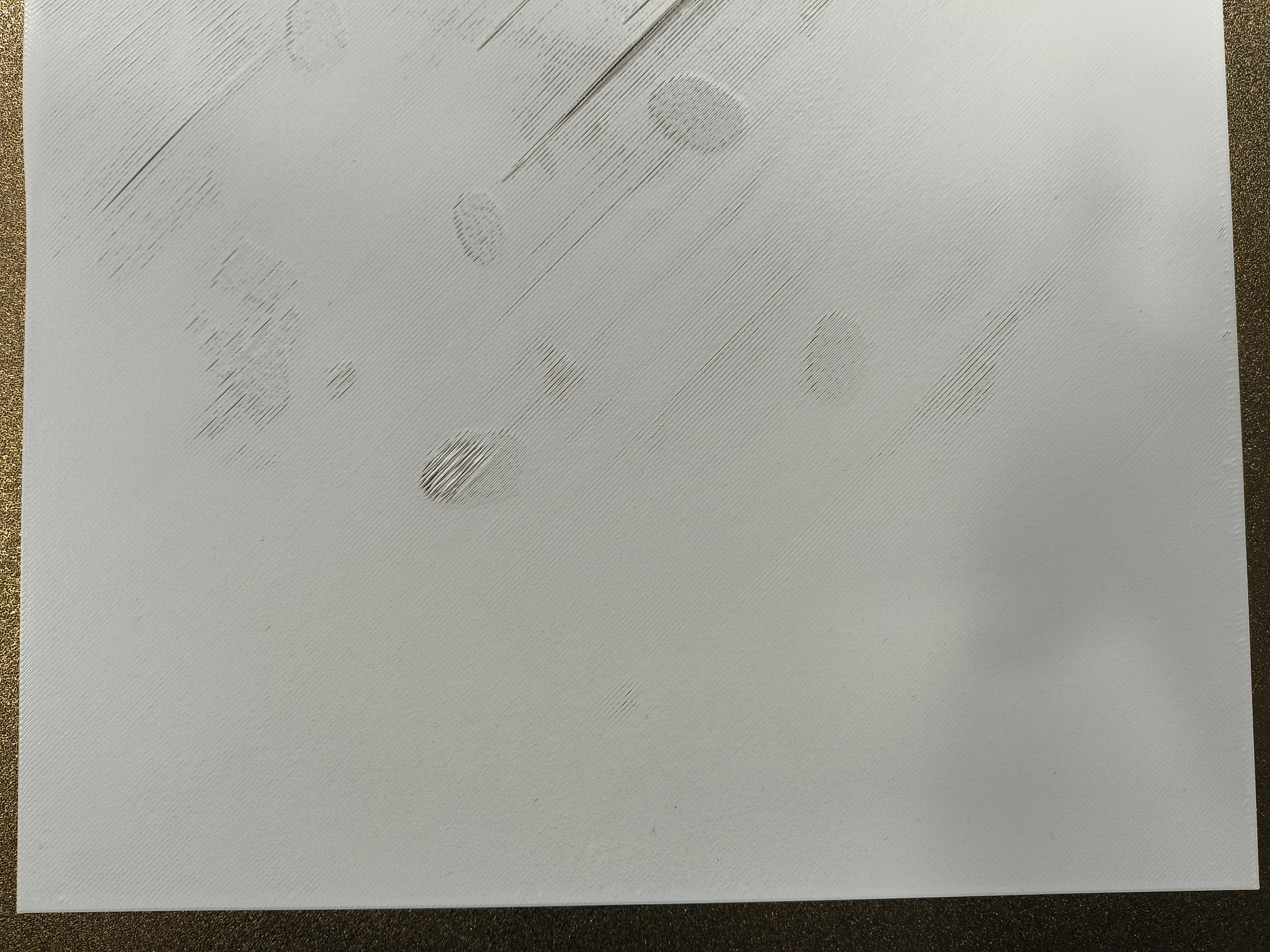¶ Bed Adhesion Issues
QIDI Build Plate is made by powder coating PEI material onto a steel plate or film PEI/PEA on stee plate, preserving a unique surface texture on the print's bottom during printing. This plate is compatible and stable with a variety of printing materials. Over time, users might face issues with inadequate adhesion of the build plate. Here are a few recommended steps for troubleshooting adhesion issues with the QIDI Build Plate.
IMPORTANT
- Do not clean the Textured PEI with Acetone, as it will damage the PEI surface.
- Ensure that the detergent used for cleaning the plate does not contain any oils or moisturizers, as those can be left on the plate and impact adhesion.
The reason why we recommend detergent for cleaning the textured plate is due to its textured surface. Alcohol might just spread the oils on the print surface instead of removing it.
Detergent acts as a degreaser and using a sponge or scrubber to wash the plate will ensure the detergent reaches inside the textured surface to clean it and improve adhesion.
Periodically, we recommend cleaning the Textured Plate to ensure that the printing surface is clean of debris or fingerprints.
The natural oils from your hands can transfer to the printing surface, impacting the sheet's adhesion properties.
In the image below, you can see an example of different fingerprints on the plate which are not easily seen normally, but can be easily seen during the first layer.

-
Wet the build plate with water.
-
Apply dishwashing detergent evenly to the build plate.
-
Use a basic sponge to scrub the Textured PEI plate, creating foam with the detergent.
-
Rinse off the detergent with clean water and then dry the build plate.
If you use the Textured PEI plate, We also recommend using a harder brush if you have it available. It will reach into the grooves of the texture better and clean any impurity.
This will effectively remove any leftover models and grease on the Textured PEI plate.
Note:
After applying the dishwashing detergent to the Textured PEI plate, it's important to scrub it with a sponge or a brush to completely remove any leftover models and grease.
Also make sure that you avoid touching the print surface with your fingers and try to handle the plate from the sides.
Grinding the surface of the Textured PEI plate with fine sandpaper or steel wool will create a new, clean surface and enhance the build plate's adhesion. It's essential to ensure the surface must be properly cleaned of any sanding debris.
¶ Other solutions to solve adhesion issues, after washing the plate
¶ Slightly raise the heatbed temperature
The adhesion between the filament and the build plate is significantly influenced by the heatbed temperature; higher heatbed temperatures result in stronger adhesion. If you feel the adhesion force is inadequate, you can slightly increase the bed temperature to enhance adhesion.
Note: For PLA and PETG materials, excessively high temperatures may lead to clogging and elephant foot problems.
¶ Add brim and support structure
The force between the print and the build plate is roughly proportional to their contact area. When printing small objects, adding a brim enhances the pressure between the print and the build plate, preventing warping or detachment. Thin and tall items are more prone to nozzle scraping at high speeds. It's advisable to use proper support when printing such objects to optimize the force structure and minimize the risk of warping or detachment.
¶ Check the heatbed temperature and the filament used
Most filament types come with a default preset in QIDI Studio. If you customize your profile, we recommend double-checking the temperatures set for the heatbed. Sometimes, you might need to adjust the temperature based on the type of filament used and its properties.
¶ Adjust the first layer settings in the QIDI Studio/ QIDI Slicer
You can adjust slicer settings for the first layer to enhance adhesion. The slicer profiles in QIDI Studio/Slicer come pre-configured with values that were performed best during testing. However, if issues arise, we recommend starting the print with a 0.5mm line width and a 0.25mm layer height for optimal results. These settings establish a solid foundation for the rest of the model and increase the chances of success.
¶ End Notes
We hope the detailed guide provided has been helpful and informative.
To ensure a safe and effective execution, if you have any concerns or questions about the process described in this article, we recommend contact to the support team. Please include a picture or video illustrating the problem, as well as any additional information related to your inquiry.